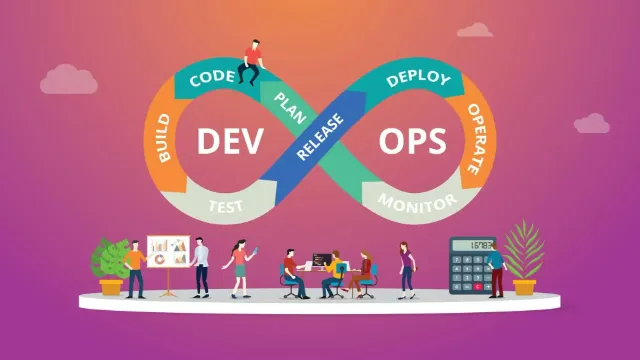How to Learn Modern Embedded Systems Programming?

Do you want to explore the fascinating world of embedded systems programming? Are you curious about how those tiny computer chips in everyday gadgets work? If so, you are at the right place. In this blog, we will guide you through the exciting journey of programming embedded systems in C and C++. We’ll also discuss the best programming languages for embedded systems and provide some tips to help you get started in the realm of modern embedded systems programming.
What are Embedded Systems?
Embedded systems are special computers made to do specific tasks. These little marvels can be spotted in a diverse array of contraptions, spanning from the humble microwave oven and the intricate inner workings of car engines, to trendy wearable gizmos and cutting-edge smart home appliances. Acting akin to the cerebral hub of these contrivances, they bestow upon them their intelligence and nimble reflexes.
Why Learn Embedded Systems Programming?
Learning embedded programming is a valuable skill because it allows you to work on the core of technologies. By understanding how embedded systems work and how to program run them, you can create innovative programs and products. It is a field with a high demand for skilled professionals in Embedded system programming, and it offers a wide range of exciting career opportunities.
Choosing the Right Programming Language
One of the first decisions you will need to make when exploring into embedded systems programming is selecting the best from programming languages. Two of the most popular languages are C and C++. These languages have been the go-to options for embedded C programming for many years.
C is known for its simplicity, efficiency, and close-to-the-hardware capabilities. It allows you to write code that is highly optimized for the specific hardware you are working with. This makes it an excellent choice for embedded programming because you often need to squeeze the most performance out of limited resources.
C++ is an extension of C and is also widely used in the embedded systems world. It adds features like object-oriented programming and templates, which can enhance code organization and reusability. Many modern embedded systems utilize C++ programming for its power and flexibility.
Also Read: Best Institution ERP Software Program
Starting with C for Embedded Systems Programming
If you’re new to embedded programming, it’s a good idea to start with C. Here is a the step by step guide to help you begin your journey:
- Learn the Basics: Start by getting a solid grasp of C programming fundamentals. There are plenty of online tutorials, courses, and books to help you with this. Make sure you understand data types, variables, loops, and functions.
- Understand the Hardware: To be effective in embedded C programming, you need to understand the specific hardware you’re working with. Read the datasheets, schematics, and reference manuals for your target embedded system. This will help you write code that interacts with the hardware correctly.
- Practice Writing Code: The best way to learn embedded C programming is by writing code. Start with simple projects, like blinking an LED, and gradually work your way up to more complex tasks.
- Use an Integrated Development Environment (IDE): IDEs make writing and debugging code much easier. Many popular IDEs, like Keil, IAR, and MPLAB X, are tailored for embedded systems development.
- Learn About Microcontrollers: Embedded systems often use microcontrollers as their processing units. Study the different microcontroller families and their features. This knowledge will help you choose the right hardware for your projects.
- Explore Real-world Projects: Join online communities and forums dedicated to embedded systems. Share what you’re working on, learn from others, and team up on cool ideas together.
Transitioning to C++ for Embedded Systems
Once you are comfortable with C and have gained some experience in embedded systems programming, you might consider transitioning to C++. Here’s how to make that transition:
- Learn C++ Basics: Familiarize yourself with the core concepts of C++, such as classes, objects, inheritance, and polymorphism. Understanding these fundamentals will help you write more sophisticated code for embedded systems.
- Adapt to Memory Management: C++ introduces more complex memory management compared to C. Learn about dynamic memory allocation and smart pointers to avoid memory leaks in your embedded systems projects.
- Utilize C++ Features: Take advantage of C++ features like templates and the Standard Template Library (STL) to write more efficient and reusable code for your embedded systems projects.
- Assess Hardware Compatibility: Ensure that the embedded systems you work with support C++ programming. Some older or resource-constrained systems might only be compatible with C.
- Experiment and Refine: As with C, practice is key. Start with simpler embedded C++ programming projects to get the hang of the language’s unique features.
Some Best Practices for Embedded Systems Programming
Whether you’re using C or C++ programming for embedded systems, there are some best practices you should follow:
- Keep Code Simple: Avoid unnecessary complexity. Embedded systems often have limited processing power and memory, so efficiency is crucial.
- Minimize Memory Usage: Be mindful of memory usage. Use data structures and algorithms that are memory-efficient.
- Understand Timing and Real-time Constraints: Some embedded systems require precise timing. Ensure your code can meet real-time constraints and deadlines.
- Test Rigorously: Thoroughly test your code, especially in scenarios where reliability is essential, such as in automotive or medical devices.
- Documentation: Maintain clear and comprehensive documentation for your code. This helps with debugging and maintenance.
- Version Control: Use version control systems like Git to track changes and collaborate with other developers.
Conclusion
Learning modern embedded systems programming can be an exciting and rewarding journey. Whether you choose to start with C or jump right into C++ for embedded systems programming, the key is to build a strong foundation and keep experimenting with real-world projects.
Remember that the best programming language for embedded systems ultimately depends on your specific project and requirements. Both C and C++ have their advantages, and becoming proficient in both will make you a versatile and skilled embedded systems programmer. You can enroll in an Embedded System certification Course to become an Embedded System Developer.






